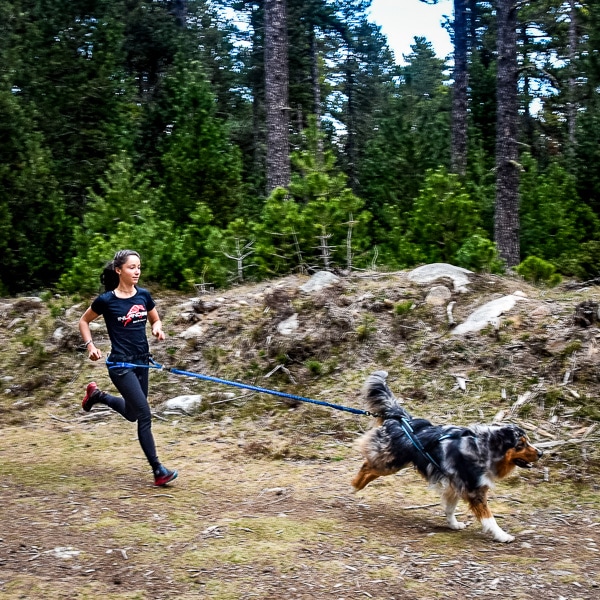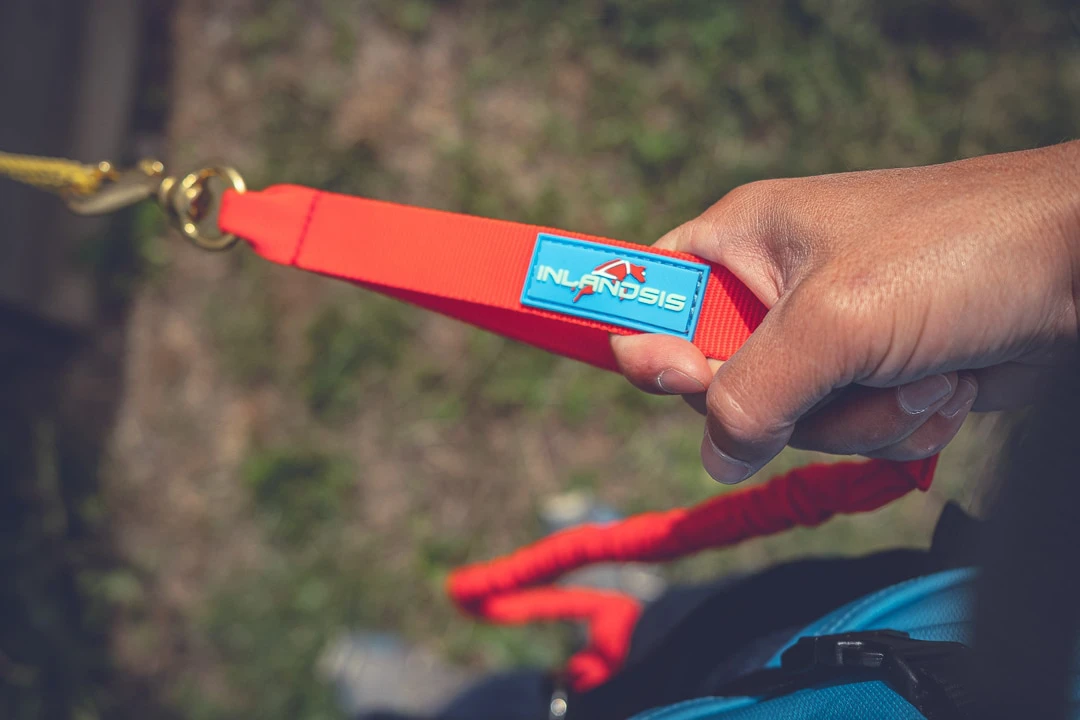Running with your dog is not only an enjoyable activity, but it also brings many benefits for both you and your four-legged companion. Regular running helps meet your dog's physical and mental needs, allowing them to expend energy in a healthy and controlled way. Indeed, every dog needs physical activity, and running is one of the best ways to help them maintain good physical shape.
On a physical level, running with your dog stimulates muscle development and helps improve endurance. This is especially important for large dogs or working breeds like the border collie or the Siberian husky, which require a lot of exercise. This activity also helps strengthen the dog's back and legs while improving joint flexibility.
Additionally, running helps prevent the risks of overweight and associated disorders, such as joint or heart problems. Regardless of your dog's breed, whether a small or large dog, this activity is beneficial as long as it's done appropriately and progressively, considering the dog's age and physical condition.
On a mental level, running offers significant cognitive stimulation. For a dog, running involves observing the environment, reacting to various stimuli like sounds and smells, which helps keep their mind alert. This regular physical activity also helps reduce destructive behaviors that often appear in dogs lacking stimulation or exercise. Therefore, it's essential to properly equip your dog with a suitable harness and an elastic leash to allow them to run safely without risking injury.

Running with your dog not only benefits them, but it is also an excellent way for you, as an owner, to maintain good physical fitness and strengthen the bond with your loyal companion. When you engage in this activity together, your dog learns to follow you, listen to your commands, and stay focused on the run, which improves their obedience and strengthens their trust in you.
One of the major advantages of this sporting activity is the opportunity to develop a real bond with your dog. Over time, running becomes a special moment shared between you and your dog, a time when your companion knows they can rely on you for guidance and support. It's important to choose your equipment carefully: using a canicross belt and harness adapted to your size and your dog's allows you to run safely and maintain good posture throughout the effort.
Over time, these running moments help create an even stronger bond, where trust and companionship grow with each outing. More than just physical activity, it's a genuine exchange where you learn to better understand your dog's needs and reactions, and they learn to adapt to your pace.
When running with your dog, one of the most important aspects to consider is choosing the right equipment. Whether you are a beginner or an experienced canicross runner, having the proper gear is essential to ensure the safety and comfort of both your dog and yourself. Poorly chosen equipment can lead to injuries or make the sporting activity unpleasant. Here are the essentials you shouldn't overlook for optimal practice.
Good equipment not only helps increase your dog’s speed and endurance but also protects their joints and back from injury. To learn more about the equipment suited to your practice, feel free to explore our range of gear specialized in dog sports.

A harness...

a leash...

and a belt!
When it comes to running with your dog, choosing the right equipment is crucial. Using unsuitable gear can lead to bad experiences or even injuries. Here are the most common mistakes to avoid to ensure the safety and well-being of your four-legged companion.
Poor equipment can not only slow your progress but also injure your dog or yourself. Therefore, it is crucial to make the right choice, taking into account your dog’s specifics, such as age, size, and training level. If you're a beginner, take the time to learn about the different accessories and how to use them properly to avoid any risks.
Running with your dog is a rewarding activity, but to ensure a positive experience for both you and your pet, it is crucial to start gradually. The start should be gentle to avoid the risk of overexertion or injury. Here are some steps to begin running practice while respecting your companion's physical limits.
The key to a good start is to begin with brisk walks. This allows your dog to get used to the regular movements of running while gradually strengthening their muscles and endurance. The first sessions can last between 10 and 15 minutes at a moderate pace. Then, as your dog adapts, you can introduce short sequences of free running, followed by walking intervals. This allows a healthy dog to gradually increase their physical effort without getting tired too quickly.
It’s also important to respect breaks and make sure your dog stays hydrated. Pay attention to signs of fatigue, such as excessive panting or slowing down. By respecting their limits and progressing gradually, your dog will easily get used to the sporting activity.
Another key point is to always equip your dog with a harness suitable for running. This helps protect their joints and back while ensuring they are comfortable during the sporting activity. Remember that your dog’s safety should be your priority during each session.
Depending on your dog’s breed, some adjustments may be necessary. For example, breeds like Siberian huskies need more physical stimulation, while small dogs or hunting dogs may require a more moderate start.
The age of your dog is a crucial factor when it comes to starting running. Not all dogs are ready to run at the same time in their life. First of all, it’s important to understand that running should not be imposed on puppies or young dogs. Until your dog has reached full physical maturity, it is strongly discouraged to engage them in fast running.
Generally, it is recommended to wait until your dog is between 12 and 18 months old before you start taking them running. However, this varies depending on the breed and size of the dog. For example, a border collie or a husky can start earlier than a large dog, which takes longer to reach full maturity. At this age, your pet’s joints and bones will be developed enough to handle the physical stress of running.
Again, before starting to run, it is highly recommended to consult a veterinarian. They can ensure that your dog is healthy and able to engage in this activity regularly. The veterinarian can also provide advice tailored to your dog’s breed and age.
For puppies or young dogs, prioritize walks and games that do not involve excessive pulling or effort. This will allow them to gradually develop their muscles and endurance without risking injury.
Gradual preparation remains the foundation for ensuring your dog’s good health. Don’t forget to regularly check their physical condition, paying attention to their paws, breathing, and general behavior during and after each session.
Canicross is a discipline that combines running and dog pulling, where you are literally pulled by your dog. Unlike a simple run with a dog on a leash, canicross involves real collaboration between the owner and their companion. The dog wears a traction harness, and you wear a belt with an elastic line attached to the dog. This discipline, which requires great synchronization, is ideal for active dogs and passionate runners looking to share an intense physical effort with their pet.
Canicross differs from regular running with a dog because it requires more advanced preparation for both the dog and the runner. The dog must not only be in good physical condition but also learn to run while staying focused on the goal, which is pulling their owner. For this, progressive training is essential. The training should include warm-up exercises to prepare the muscles for effort, regular breaks to avoid overheating and injuries, and paying close attention to signs of fatigue in the dog, such as heavy panting or slowing down.
The rules of canicross include using a suitable harness that evenly distributes the pulling force across the dog's back and shoulders, and a belt or harness for the runner to free the hands and ensure good control. Before starting, make sure you are properly equipped and that your dog is of the required age (usually 12-18 months, depending on the breed). As with any dog sport, it is essential to protect your dog and consider their capabilities.


If you prefer cycling to running, bikejoring is an excellent alternative for those who want to engage in a dog sport while enjoying speed and pulling power. Like canicross, bikejoring is based on canine pulling, but in this case, the dog runs in front of you while you pedal, pulling slightly to maintain the pace.
Bikejoring requires slightly different equipment. The dog must still wear a well-fitted traction harness, and you need a pulling line attached to your bike with a shock absorber to prevent sudden jerks. Speed control is crucial here, as abrupt changes can injure the dog or cause falls for the cyclist. It's therefore important to learn the basics of bike handling while maintaining good communication with your dog. Specific training is necessary for the dog to get used to following the line and responding to the owner's vocal commands.
In terms of physical effort, bikejoring is often less demanding for the runner than canicross, but it requires constant attention to safety. As always, choosing the right equipment is essential to ensure a proper practice of the discipline. Your dog must be well-equipped to avoid discomfort or injury, especially to the paws and joints. Frequent stops are also recommended to monitor your dog's condition and prevent overheating during longer sessions or in hot weather.
Bikejoring is particularly popular among cyclists who want to share their passion with their dog while enjoying a high-intensity activity. If you have an active breed like a husky or a border collie, bikejoring can become the ideal activity for both of you.
Please sign in first.
Sign in